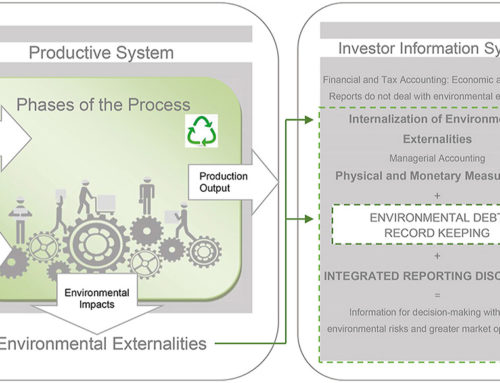By Amy Larkin and Siddhartha Velandy
This post was originally published on the Huffington Post on January 10th, 2014 and co-authored by Siddhartha Velandy, a Major in United States Marine Corps Reserve and author of The Green Arms Race: Reorienting the Discussion on Climate Change, Energy Policy, and National Security, 3 HARV. NAT’L SEC. J. 309 (2012). The views expressed here are his own.
It’s official. Climate change has opened a new frontier. Defense Secretary Chuck Hagel recently announced the Pentagon’s first ever “Arctic Strategy,” which is designed to protect American security interests as rising global temperatures melt polar ice. He noted that climate change is “transforming what was a frozen desert into an evolving navigable ocean.” This increased access will heighten tensions in the region as nations compete for newly-accessible natural resources and trade routes.
We are creatures from different ends of our nation’s cultural spectrum — one from the military and one from Greenpeace. Even so, we share a vision for the United States in order to safeguard our environment and best provide for the future security of the nation. We call it Mutually Assured Survival, and we are encouraged that Secretary Hagel asserts his intention to address the long term in his short-term Pentagon decision-making. But he did not mention the most important piece of a long-term strategy — the R&D funding necessary to eliminate American dependence on oil — not just fossil fuels from foreign sources. This will prevent the need to engage in conflict in the Arctic (and elsewhere) as well as help prevent runaway climate chaos.
Responding to this threat requires decisive action and consistent funding. Melting ice caps and the corresponding rise in sea levels will increase global instability as coastal populations around the world lose land, food and water. The only real recourse to protect any nation from future resource conflict is to decrease dependence on oil and gas, and increase alternative energy sources.
Framing climate change squarely in national security terms is essential. Doing so de-politicizes the discussion, unifies seemingly disparate constituencies and allows R&D for enhanced energy capability to be properly prioritized. The military’s experience as an innovator is urgently needed.
The Department of the Navy, in order to accomplish its mission – -win wars, deter aggression and maintain the freedom of the seas — is at the forefront of this energy innovation. In December, Secretary of the Navy Ray Mabus and Agriculture Secretary Tom Vilsack announced the “Farm-to-Fleet” program. This groundbreaking program adds biofuels, for the first time, into the regular Defense Department fuel procurement process. There is one controversial issue here worth highlighting. The program requires that biofuel feedstock not interfere with food production. In the past three years, consistent demand has yielded groundbreaking innovation in this area, but fuel from waste remains expensive. Instead of corn-based biofuels, the industry can move to biomass derived from waste material, whether scrap lumber, forest debris or manure. With waste as the primary source of the new biofuels, this partnership between the Defense and Agriculture Departments can increase national security, benefit the environment, and in the long run, result in energy cost benefits for the American people.
The Department of Defense is the biggest consumer of petroleum in the nation, and by favoring biofuels from waste, it will advance the technology and enhance the market for the next generations of energy technologies. Congressional budget hawks are concerned that fuel from waste is too expensive, and are gunning for this R&D budget. Just as early computers cost more than the magical ones in your pocket today (also brought to you by the Defense Department’s invention of the Internet), new technologies become cost-effective only after pioneers stick their necks out. Aggressive Department of Defense R&D will eventually use the market to incentivize cost-effective energy production, and then all of us will be able to diversify our fuel supply without paying a premium.
U.S. Marines are not often referred to as ardent environmentalists; however, Marines have taken on energy innovation as part of their ethos as America’s professional warriors. By fielding alternative energy technologies like solar blankets and hybrid power generators in some of the most austere and dangerous places on earth, the troops are safer and less dependent on resupply.
There is nothing more important for peace and stability than a transformation to a thriving low carbon economy — one not based on fossil fuels or biofuels that compete with food for land and water. Those in Congress who want to starve or underfund this research are terribly misguided. Fossil fuels cost society trillions of dollars, paid by taxpayers, other businesses, and individuals. Recent studies show that air pollution costs more in health care than does tobacco.
Every military engagement, whether full combat operation or disaster relief, requires tremendous amounts of energy to execute. Last year, the Defense Department burned 4.3 billion gallons of fuel at a cost of approximately $20 billion. As the single largest consumer of energy in the United States, the Pentagon is uniquely positioned to intensify innovation and drive global demand for alternative and efficient energy technologies. Clean energy innovation is inexorably tied to national security. As a peaceful successor to the Cold War’s Mutually Assured Destruction defense, the Pentagon’s race to advance clean and efficient energy is key to our Mutually Assured Survival.
We cannot be timid. The myriad consequences of climate change are already compromising national security and financial stability. Only strong leadership and decisive action can protect our food, water, health and economy. We must support a Defense Department that empowers Mutually Assured Survival.





